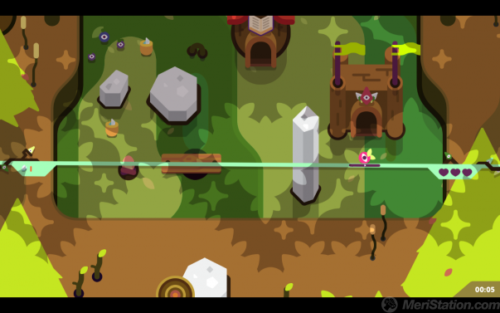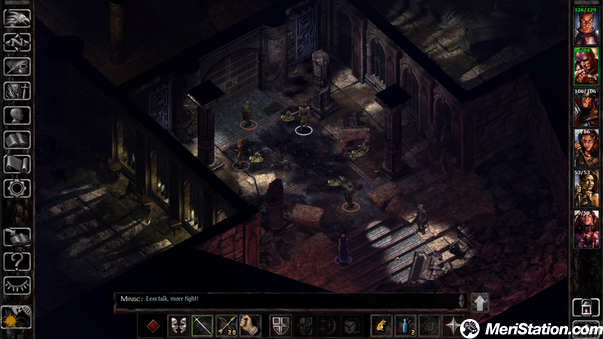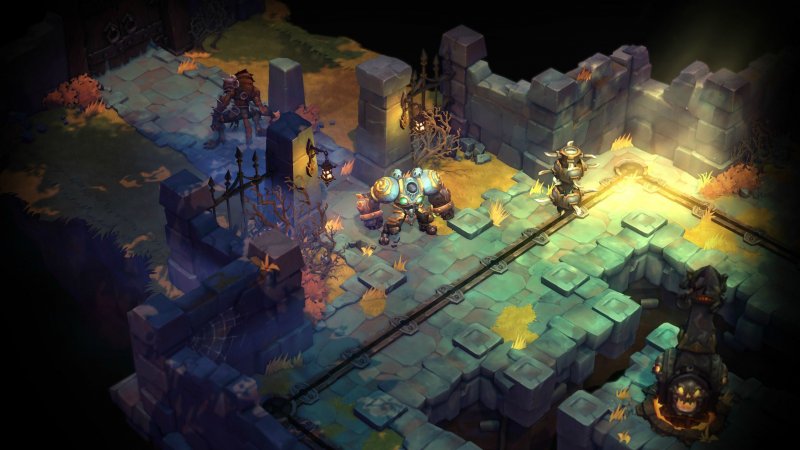It is said that one of the endemic evils of the modern game is the lack of difficulty. Large productions tend to facilitate the gaming experience through the use of all kinds of aids and devices. Among the vortex of titles that follow this tonic, from ti
me to time you can find one that goes off the tangent, which seeks to offer a challenge to the user. It is no coincidence that many of these ideas are found in the indie scene. This is the case of TumbleSeed , a video game not suitable for impatient but tremendously addictive.
YONDER: THE CLOUD CATCHER CHRONICLES
This new work, available on PlayStation 4, Nintendo Switch and Steam, has been developed by a team of only five people , although testers and other media professionals participated in its development. Noteworthy is the presence of Greg Woh
lwend, a developer who has been working on indie projects for years and who has published videogames such as Hundreds, Ridiculous Fishing or TouchTone. On the other hand, since a few months ago certain players have had the opportunity to access the alpha version of TumbleSeed. Now, with all the mechanics properly polished, this original proposal has just arrived on the market.
TumbleSeed is part of the genre known as roguelike , which includes works such as Nuclear Throne or The Binding of Isaac. As it usually happens from the moment in which a series of products is included under a same umbrella, differences arise that c
omplicate their cataloging in one or the other group. Usually, the games of this genre lead the player to the exploration of dungeons through proposals that prioritize the gameplay above all. In this project, however, there are no dungeons as such. What is presen
t is the devilish difficulty and the procedural component , as well as the shortage of checkpoints .
The sacred prophecy
In the wonderful world of TumbleSeed the seeds live peacefully on the side of a giant mountain. Sheltered by the warmth of the sun and the ple
asures of good company, these amusing creatures believe they are in an earthly paradise. Unfortunately, everything is twisted when a violent storm breaks loose and dangerous holes emerge and nasty monsters willing to annihilate anyone who crosses their path. Thus begins the story of our sympathetic seed. Acco
rding to an ancient prophecy, your fate is to ascend to the top of the mountain and plant yourself. The argument that is presented to us is obviously a mere excuse for the user to be at the controls and enjoy an adventure focused on pure and hard gameplay.
The objective is none other than to climb to the top , slowly and with a lot of calm. However, the character’s management is not direct. On the screen appears a horizontal bar that we must move up and down in a balanced way to move and so that the seed does not fall through a hole or die crushed by an enemy. Pressing the two control sticks at the same time starts the ascent. Mastering these controls is completely necessary, since it is the mechanics on which the rest of the playable gears are based.
The adventure unfolds through five worlds full of monsters and dangers. At the beginning we will have at our disposal three hearts of life, but we will soon discover that losing them is a matter of seconds if we are not sufficiently attentive to the screen. The concept is to try to dodge holes and enemies while trying to get the tightrope seed to continue its long journey to the top.
Ability and randomness
What a priori may seem a light task, quickly uncovers itself as a suicide mission. At this point the procedural component comes into play. In other productions, it is enough for the user to study the terrain and use trial and error to decide their next movem
ents. In TumbleSeed, each game is different , since not only the elements (holes, monsters and traps) are placed randomly, but suddenly new challenges appear in the same game. Therefore, sometimes the skill is not enough , since at any moment a gap can arise that makes us lose our lives without being abl
e to avoid it. In that sense, this indie is unfair and offers virtually no concessionsto the player. In that line, automatic save points are placed between level and level, which is counterproductive because there are several phases within the same scree
n, which means that when you lose all the hearts you return to the point of origin. This translates into feelings of frustration , although it is also true that by overcoming the challenge, satisfaction multiplies. Anyway, maybe they should have checked the difficulty curve a bit.
TumbleSeed incorporates enemies with very different patterns . For example, we found a giant spider-like monster (or crab, we do not know very clearly) that jumps over the character, while a sheep-like creature with a limaco gait walks through t
he area in search of his next victim. Some are easy to dodge; others will lick your back again and again . To this we must unite the many obstacles that struggle to take away hearts, all of them functioning at the same time as we try to balance the movement of the prophetic seed.
Transformations, conversations and secondary missions
We will not reach the peak of the mountain fleeing from the corrupt animals. The protagonist has a set of transformations that give her extraordinarily useful powers(thirty in all). For example, Heartseed recovers hearts of life, Flagseed plants fla
gs to save progress temporarily, Thornvine uses spikes aiming to kill enemies and Crystal is able to get extra glass. The crystals are the gasoline of our powersand they are scattered over the map. According to the tr
ansformation one or more is required to make his magic work, so the collection is essential (those of golden color are worth several normal ones). In all phases are located special holes whose purpose is to plant crystals, which in turn give us special characteristics
. Some transformations cause modifications in the scenario-fill gaps with water, to name a concrete-or help turn the seed furrows into deadly weapons. At half level it is possible to access a m
ysterious sanctuary and choose a power between the two available. They are not always the same, because they are generated randomly.
The adventure as a whole requires some preparation. Between phase and phase we enjoy some moments of relaxation that we can take advantage of to visit shops, homes and other establishments. TumbleSeed incorporates very elementary RPG mechanics . Thus, the character has the opportunity to buy crystals in stores, invest their fortune in banks, p
ractice marksmanship or accept secondary missions. As for the sidequests, they are all quite basic, such as killing a few monsters or getting a specifi
c object. However, they bring a touch of originality. The conversations, in perfect English-it is not an impediment to enjoy the work, have no more significance than to print a note of humor and color the world with some life.



